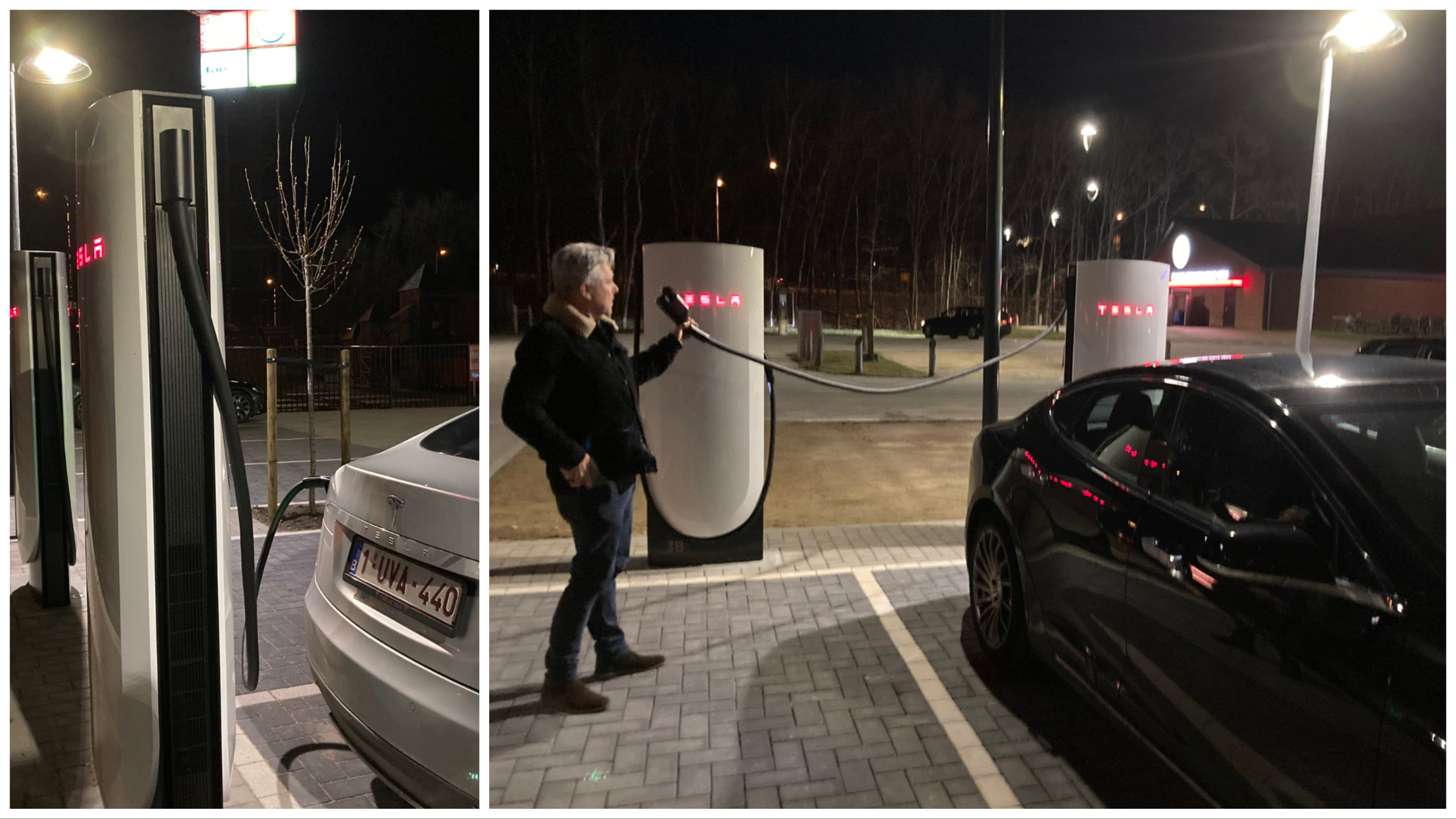Exclusive World Premier here I think - charging a Lyriq at a Tesla SuperCharger (with the Magic Dock). It isn't pretty, but it can be done...
![Image]()
![Image]()
![Image]()
![Image]()
Doing it this way (perpendicular) requires lining everything up just right, and pulling over the curb without hitting the bollard. You'd want to do this at the right-most stall in order to not block any other Tesla's. I couldn't do that in this case as there was a vehicle already there. This is barely doable - has to be perfect for enough cord length, and even that is really torquing the cable at a right angle at the connector.
The much better way is to pull in sideways - parallel to the stall / curb. If you do this on the left-most stall, you won't block any other stalls. Not all SuperCharger stations allow you to pull like this, some perhaps could be done at a 45 degree angle, but would block the other stall a bit.
![Image]()
![Image]()
![Image]()
Doing it this way (perpendicular) requires lining everything up just right, and pulling over the curb without hitting the bollard. You'd want to do this at the right-most stall in order to not block any other Tesla's. I couldn't do that in this case as there was a vehicle already there. This is barely doable - has to be perfect for enough cord length, and even that is really torquing the cable at a right angle at the connector.
The much better way is to pull in sideways - parallel to the stall / curb. If you do this on the left-most stall, you won't block any other stalls. Not all SuperCharger stations allow you to pull like this, some perhaps could be done at a 45 degree angle, but would block the other stall a bit.









